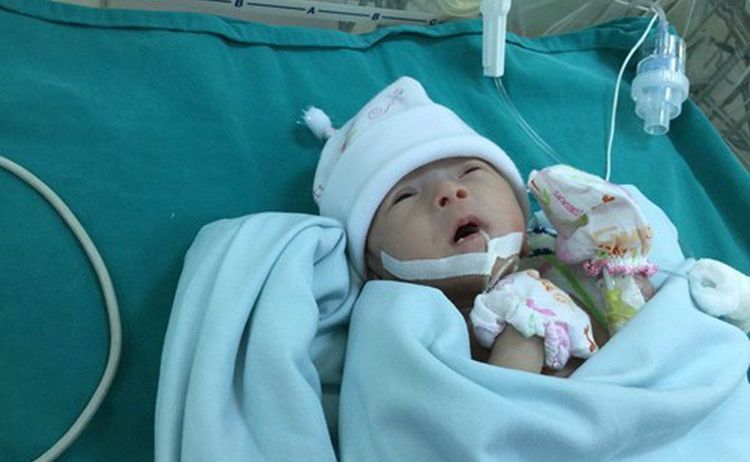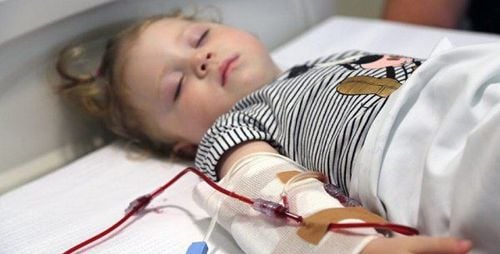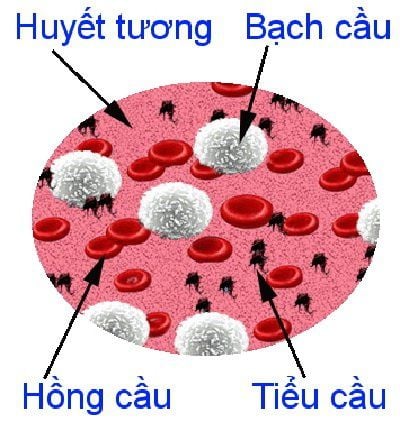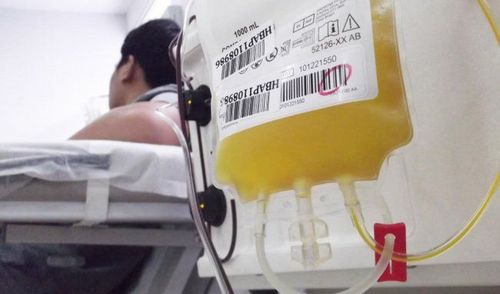This is an automatically translated article.
When transferring blood to a newborn, it is necessary to follow important principles to ensure safety, to avoid the risk of encountering unwanted risks.
1. Effects of blood transfusion and blood products
Transfusion of blood and blood products is the delivery of components including red blood cells, platelets and possibly white blood cells to a patient. In addition, transfusion of blood and blood products also aims to provide clotting factors, providing proteins that create colloidal pressure for patients to treat diseases.
2. Principles of blood transfusion for newborns
Indication for blood transfusion in neonates is the transfusion of a component of the blood that the child needs; A child's hemoglobin (or hematocrit) level is not a determining factor in transfusion. The decision to receive a blood transfusion is aimed at relieving clinical symptoms such as bleeding, and at the same time preventing complications and mortality. If the child is bleeding continuously, the hemoglobin will not be able to reflect the actual clinical condition of the child; In low birth weight babies (less than 2.5 kg at birth or born before 37 weeks of age), hemoglobin may gradually decrease (anemia in premature infants). However, blood transfusion is recommended only when the hemoglobin is less than 8g/dl (hematocrit less than 24%) if the child is healthy; In the case of a child in shock from blood loss, if blood is not immediately available for transfusion, 0.9% sodium chloride infusion may be given until blood is available.

Cần lưu ý nguyên tắc khi truyền máu cho trẻ sơ sinh
3. Some risks of newborn blood transfusion and precautions
3.1 Risk
Viral infections: HIV, hepatitis; Infection if blood and blood products are improperly prepared or stored; Allergic reactions: Itching, rash, or difficulty breathing, wheezing; Severe hemolytic transfusion reactions; Diseases grafted to the host. 3.2 Measures to reduce the risk of blood transfusion
Blood donor control : Prior investigation of medical history, sexual activities, travel and drug use before blood collection; Screening for infectious diseases transmitted in blood donors such as HIV, hepatitis virus, Human T-lymphotropic virus (leukemic virus), bacteria that cause syphilis, West Nile virus (virus that causes dengue fever) blood, yellow fever and Japanese encephalitis); Blood group quality assurance, compatibility testing, storage and transport of blood; Make sure the blood bank follows recommendations for safe blood; Use appropriate blood, strictly comply with blood transfusion regulations; Parents should immediately notify the doctor in case the child shows signs of discomfort, pain, rash, difficulty breathing during or after the blood transfusion. These allergic reactions can be managed with oral or intravenous medications. If allergic reactions are frequent, the child may be given a prophylactic medication before a blood transfusion to reduce the risk and frequency of allergies; Blood given to a child must be cross-reacted with the child's blood. When sending a baby's blood sample for blood grouping and cross-reactivity can send a sample of the mother's blood.

Sử dụng máu thích hợp và thực hiện đúng quy chế truyền máu
4. How are blood transfusions and blood products for infants performed?
Review the general guidelines for the use of blood products; Set up the peripheral line if not already; Before starting a blood transfusion, it is recommended to check to make sure that the correct blood type is used for the child, the child's information is clearly recorded, the blood has been checked with the blood of the mother and the child. In case of emergency, blood type O should be used. At the same time, the transfusion bag has not been opened and does not leak; blood bags should not be left out of the refrigerator for more than 4 hours, plasma is not pink, red blood cells are not blue or black, blood has no clots; the intravenous line must be clear; Record the child's temperature, heart rate and breathing rate; Remove the protective layer from the blood bag, do not touch the opening, and attach the blood bag to the transfusion set; Open the stopper on the transfusion set's chain to allow blood to flow to the end of the infusion line, then lock the stopper; Remove the transfusion stopper of the line, attach the line to the transfusion set immediately; Blood transfusion for newborns at the rate of 15-20 ml/kg body weight, average time is 2 hours, maximum is about 4 hours; Monitor the child's temperature, heart rate and breathing rate, reducing the infusion rate by half as the child's vital signs begin to rise; If possible, a blood transfusion machine should be used to control the rate of infusion; At the end of the blood transfusion, the child's health should be reassessed. If further transfusion is required, it should be given at the same rate and volume.
5. Follow-up after blood transfusion
When giving blood, the baby's vital signs should be monitored according to the following steps: Before blood transfusion; as soon as blood transfusion is started; every 5 minutes for the first 15 minutes of initiating a blood transfusion; at least every 1 hour during the transfusion and every 4 hours for 24 hours after completion of the transfusion; When monitoring, it is necessary to record the information of the child: General condition, heart rate, breathing rate, temperature, import and export bill (oral fluid, intravenous line and amount of urine excreted); Record more time to start and end blood transfusion, volume and type of blood transfused, blood bag number, side effects. When it is necessary to give blood to a newborn to treat an illness, parents need to coordinate with their doctor to ensure the best treatment effect and avoid possible dangerous complications.
Please dial HOTLINE for more information or register for an appointment HERE. Download MyVinmec app to make appointments faster and to manage your bookings easily.













